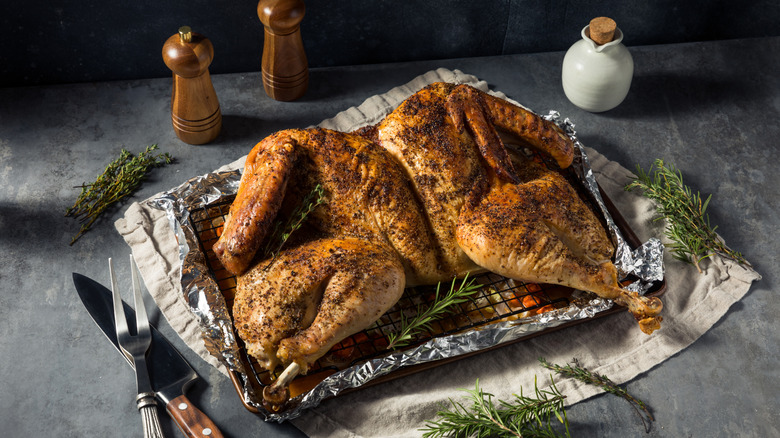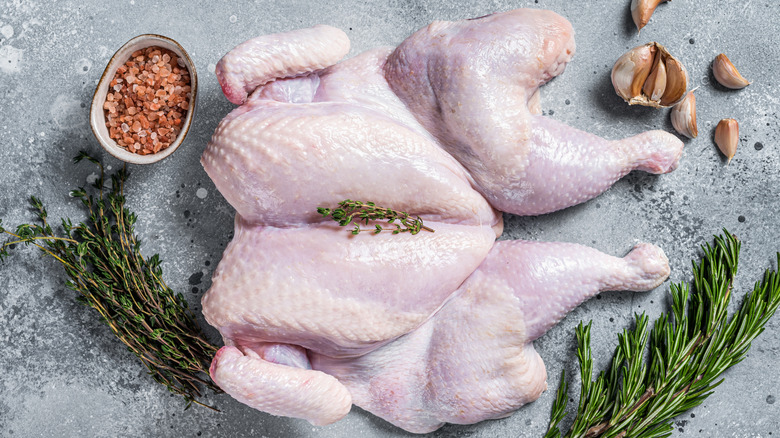How To Spatchcock A Turkey The Easy Way According To Ree Drummond
The centerpiece of the holiday table presents quite a conundrum. You can craft perfect plates of mashed potatoes, vegetables, and pies — and still end up with a subpar turkey. Holiday-hosting novices and experienced home cooks alike have unintentionally produced turkeys that are overdone or underdone, bland or soggy or any terrible texture and taste in between. They get these unpleasant results, that is, until spatchcocking comes to the rescue. Also called butterflying, the method requires removing the backbone of the turkey so that it can lie flatter as it cooks. Many experts herald the virtues of spatchcocking, but others lament the challenges, maintaining that the cuts are tricky and the process is messy. If your opinion falls into that latter category, The Pioneer Woman Ree Drummond has a simple workaround (via YouTube).
Spatchcocking's increased surface area allows a turkey to cook more evenly and more quickly (cutting a typical cook time of more than three hours down to as little as an hour and a half) and spatchcocking will also give poultry crispy skin, but taking out the backbone and pressing the bird flat can take some muscle and precision. So Drummond advises home cooks to simply ask their butcher to spatchcock the turkey for them. Many butchers are more than willing to provide customized cuts on request, and even some grocery stores, like Whole Foods, will personalize poultry if you ask. Drummond says the request may take a smile and a little politeness, but butchers will be better equipped to make the cut and can help save you from the hassle.
If you're still spatchcocking at home, get the shears out
For some, asking a butcher to help spatchcock might not be an option (maybe there isn't a butcher nearby or maybe your grocery store doesn't offer custom cut services). For others, spatchcocking at home might just be an intriguing challenge. Either way, Ree Drummond doesn't conclude this piece of culinary advice by merely passing the poultry baton. She's got a few other suggestions for making spatchcocking easier — and it starts with having the right tools. You remove the backbone of a turkey by making identical cuts on either side of the bone, but the meat is thick and when you reach the end of the backbone, you'll have to get through a hip joint. A regular knife probably isn't going to, well, cut it. This is one of those things that your kitchen shears can do. Drummond says to get a very sharp, good-quality pair of kitchen shears to make the slicing simpler.
After you've got the backbone out, turn the turkey over to lie breast-side up. With both hands, press down on the turkey until you hear the crack of the breastbone breaking. At this point, the bird will already be pretty flat, but since the success of spatchcocking lies in an even surface area, Drummond suggests getting a good hold on either side and spreading the turkey apart as much as possible. Spread the thighs and legs out, too, so that everything is sitting flat. Then, when the turkey leaves the oven, it will be cooked to crispy perfection.

